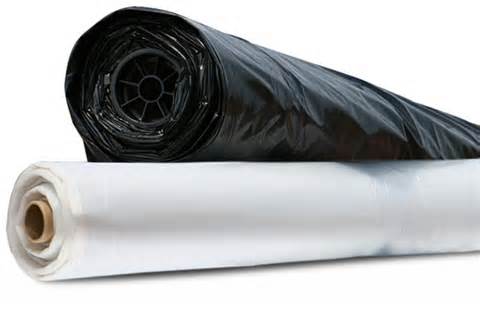When it comes to building or upgrading a greenhouse, selecting the right cover material is crucial. Among various options, POLY PLASTIC stands out as one of the most reliable and effective choices for greenhouse coverings. Whether you’re an experienced gardener or a beginner, understanding why POLY PLASTIC is the best option can help ensure that your plants receive the protection and care they need to thrive.
In this guide, we’ll walk you through the key reasons why POLY PLASTIC is an excellent choice for greenhouse covers. We’ll cover what makes this material unique, why it’s ideal for a variety of greenhouse environments, and who benefits from using it. By the end, you’ll be armed with the knowledge needed to make the best choice for your greenhouse project.
Why Choose POLY PLASTIC for Your Greenhouse?
When you think about greenhouse materials, you probably want something that will provide consistent protection against the elements while promoting optimal plant growth. POLY PLASTIC excels in both of these areas, making it the best choice for many greenhouse owners.
1. Durability and Long-Lasting Protection
One of the most significant advantages of POLY PLASTIC is its durability. Unlike traditional glass or some other durable plastic material, POLY PLASTIC is designed to withstand extreme weather conditions, including heavy rain, snow, and intense sunlight. It’s resistant to tears and punctures, ensuring your plants stay protected for many years.
Additionally, POLY PLASTIC is UV-resistant, meaning it won’t degrade or lose its strength when exposed to sunlight. This UV resistance also helps to maintain the right balance of light and temperature inside the greenhouse, providing an optimal growing environment for your plants.
2. Improved Insulation
POLY PLASTIC is known for its excellent insulation properties. This is particularly beneficial when you need to maintain a consistent internal temperature in your greenhouse. The material traps heat during cold weather, helping to create a warm and stable environment for your plants, even during winter months. In contrast, it also helps to reduce excessive heat buildup during the warmer months, ensuring your plants don’t get too hot.
Because of these insulation properties, POLY PLASTIC can help reduce energy costs associated with heating or cooling your greenhouse. The material’s ability to regulate temperature can lower the need for additional heating systems, making it an eco-friendly and cost-effective choice for greenhouse owners.
3. Light Diffusion for Healthier Plants
Another key benefit of POLY PLASTIC is its ability to diffuse light. Instead of letting light shine directly through in a harsh, direct manner, POLY PLASTIC gently diffuses it across the greenhouse. This helps to reduce the risk of sunburn on delicate plants while ensuring that all areas of your greenhouse receive adequate light for photosynthesis.
This feature is particularly beneficial for growing crops that require specific light conditions, as the even distribution of light promotes healthy, robust plant growth. Whether you’re growing vegetables, flowers, or herbs, POLY PLASTIC can help create the perfect environment for your plants to thrive.
What Makes POLY PLASTIC Different from Other Materials?
There are various materials you can choose from when building a greenhouse, but POLY PLASTIC has unique advantages over alternatives like glass or polycarbonate. Here’s why it’s superior:
1. Cost-Effective
While high-quality glass or polycarbonate materials can be expensive, POLY PLASTIC offers a more affordable alternative without sacrificing performance. It’s a cost-effective solution for those who want durable and efficient greenhouse covering without the high upfront costs.
2. Lightweight and Easy to Install
Unlike glass, which can be heavy and fragile, POLY PLASTIC is lightweight and easier to handle. This makes the installation process faster and more straightforward. Plus, it reduces the risk of damage during installation or transportation.
3. Versatility
POLY PLASTIC comes in different thicknesses, colors, and types, allowing you to choose the one that best suits your specific greenhouse needs. Whether you need a material that provides extra insulation for winter or one that offers better light diffusion, POLY PLASTIC offers a variety of options to meet those needs.
Who Benefits from Using POLY PLASTIC?
While anyone with a greenhouse can benefit from using POLY PLASTIC, some groups will find it especially valuable:
1. Commercial Greenhouse Owners
If you operate a commercial greenhouse, the durability and cost-efficiency of POLY PLASTIC make it a top choice. The material’s ability to reduce energy costs while protecting plants from harsh environmental factors can improve the profitability of your business. Additionally, the long lifespan of POLY PLASTIC means fewer replacements, which saves both time and money.
2. Home Gardeners
For home gardeners, POLY PLASTIC offers a reliable and affordable solution for small to medium-sized greenhouses. Whether you’re growing vegetables, herbs, or flowers, the material’s ability to maintain consistent temperature and light conditions will help ensure a successful growing season.
3. Those in Harsh Climates
If you live in an area with extreme weather conditions, POLY PLASTIC can be a lifesaver. It provides excellent protection against heavy winds, snow, and hail, ensuring your plants stay safe no matter what Mother Nature throws your way. Additionally, POLY PLASTIC’s insulating properties are especially valuable in regions with colder temperatures, as it helps retain heat and prevent frost damage.
How to Install POLY PLASTIC in Your Greenhouse
Installing POLY PLASTIC in your greenhouse is a relatively straightforward process. Here’s a general step-by-step guide to get you started:
Measure Your Greenhouse: Before purchasing POLY PLASTIC, measure the dimensions of your greenhouse to ensure you buy the correct amount of material.
Cut the Plastic to Size: Use a sharp utility knife or scissors to cut the plastic sheeting to the necessary size, ensuring it covers the entire frame of your greenhouse.
Attach the Plastic to the Frame: Secure the poly plastics to the greenhouse frame using clips or a specialized fastening system. Be sure to stretch the material taut to prevent sagging or wrinkles.
Trim Excess Material: Once the plastic is securely attached, trim any excess material to create a neat and tidy finish.
Conclusion: POLY PLASTIC is the Smart Choice for Your Greenhouse
With its durability, insulating properties, and cost-effectiveness, poly plastics proves itself to be the best choice for greenhouse coverings. Whether you’re growing flowers, vegetables, or herbs, poly plastics offers the protection and conditions needed for healthy, thriving plants. Its versatility, ease of installation, and long lifespan make it a go-to option for greenhouse owners around the world.



